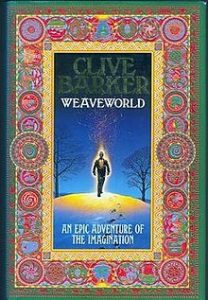
Have you heard of the Fugue? You may have caught glimpses in other stories of that alternate magical world overlapping our own. It is a fecund land filled with wonders and peopled by almost human creatures known as the Seerkind. When ordinary bloke Cal Mooney by accident tumbles into it and out again, it breaks his heart.
But the Fugue is not now a very happy place. An unseen force known only as the Scourge despises all magic and is determined to obliterate them all. Humans persecute them, calling them fairies or demons. And one of their own kind, the exiled sorceress Immacolata, wants revenge. In the face of these threats, the Seerkind have taken cover, weaving themselves—people, landscapes, magic, and all—into a carpet that was left in the hands of a few dedicated guardians in the mundane world—the Kingdom of the Cuckoos, as they call it—to be released in a few years after the danger from the Scourge has passed.
Decades later, the all-clear signal still has not come, and the carpet is almost within Immacolata’s grasp. The last guardian is hospitalised, and dying. She has left it too late to tell her granddaughter, Suzanna Parish, what she needs to know to protect the Fugue.
This is the situation at the start of Clive Barker’s 1987 award-winning novel, Weaveworld. It’s a thick book (my edition is 720 pages) but it covers a lot of ground without much flab. The story moves along fairly briskly, only getting bogged down in a few places. We follow Cal and Suzanna as their paths converge, split apart, and re-converge, and their respectable, boring lives are upended in their struggles against the magical and mundane forces that would destroy the Seerkind.
The story weaves back and forth between the Fugue and the very concrete world of Liverpool. The characters are finely crafted, there are some evocative descriptions and gripping scenes, but I suspect that when most of the details fade I will still remember this story fondly, primarily for Cal’s quiet heroism. His actions at the climax are inevitable and awesome, and another character’s reaction—Is he out of his f***ing mind?—seems appropriate. And when the story ends, we’re left with one message that pretty well sums up the reasons we tell stories: What can be imagined is never entirely lost.
I’m not a big fan of the horror genre. I dip into it occasionally, and as often as not end up wishing I hadn’t, but this novel straddles fantasy and horror, and is (mostly) redeemed by Suzanna and Cal’s determination and devotion to the Seerkind, and to each other. But be aware that there are horrors here: fanaticism, monsters, violent sex, attempted genocide… There is also some very earthy language describing bodily functions, and some things that don’t quite work (the Menstruum, for one).
The story is full of religious language and motifs, some of them rather twisted: raptures and scourges, the Black Madonna and her dead, perverted sisters, an entity that calls itself the angel Uriel. But they are not always what they seem, and there’s little clear-cut black and white. No one, it seems, is beyond hope of redemption.
Audience: Adult. Contains everything: Violence, rape, bad language, horror. And heroism and hope.
